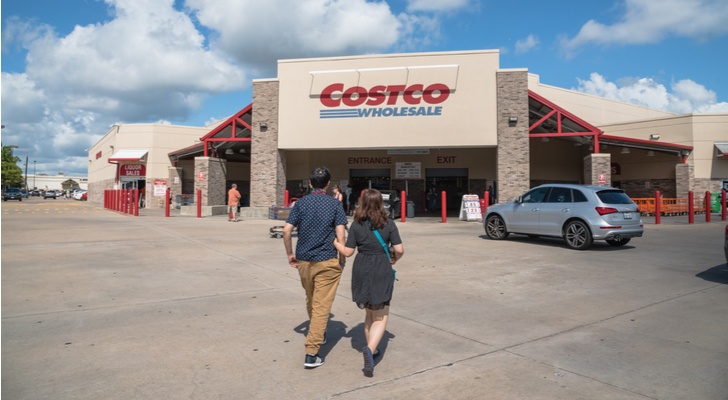Back in mid-2017, shares of big box retailer Costco Wholesale Corporation (NASDAQ:COST) dropped sharply after e-commerce giant Amazon.com, Inc. (NASDAQ:AMZN) acquired premium-end grocer Whole Foods Market. COST stock dropped from $180 to $150 in just a few weeks as investors were worried that Amazon was going to eat Costco’s lunch.
That never happened. Instead, Costco’s numbers have only gotten better since then. And COST stock has soared higher.
The truth is Amazon is never going to eat Costco’s lunch. Costco is a big moat, stable growth player with an exceptionally loyal user base and exceptionally unique value proposition that stresses all-in-one convenience and low prices. That giant moat, loyal membership base, and unique value prop makes Costco hard to overthrow.
COST stock is now back above $180. In fact, it is now soaring above $190.
Because of its strong fundamentals, Costco stock is a long-term winner. Buyers at current levels will be rewarded in a five-year window.
But above $190, Costco stock does look slightly overextended here.
Big picture: COST stock is a long-term winner that is subject to near-term volatility due to valuation pressures.
Here’s a deeper look:
COST Stock Is a Long-Term Winner
For all intents and purposes, Costco is the Amazon of brick-and-mortar retail. It makes all its money from membership fees, which essentially subsidize an anemic retail business and allows the company to offer an assortment of goods at the lowest possible prices.
This is exactly what Amazon does. Amazon just does it online. Costco does it offline.
Some investors think that this means that Costco is a natural victim of Amazon’s offline retail push. But that isn’t the case. Instead, just the opposite is true. Costco has a giant moat protecting it against Amazon’s offline retail push.
For the same reasons that it is hard to disrupt Amazon in the online retail world (loyal membership base, enhanced convenience, and low prices), it is equally as hard to disrupt Costco in the offline retail world (loyal membership base, enhanced convenience, and low prices). As such, while Amazon’s offline retail efforts may adversely impact other retailers, they won’t have a materially negative effect on Costco.
Just look at the numbers. Costco’s numbers are actually substantially better this year (post-Amazon acquisition of Whole Foods) than last year (pre-Amazon acquisition of Whole Foods). Through the first half of fiscal 2018, comparable sales excluding gas inflation and foreign exchange, are up 6.6%, including up 7.1% in the U.S. Last year, total comparable sales growth through the first half of fiscal 2017 was 2%, both globally and in the U.S.
In other words, Costco is a big-moat, stable growth player that will continue to succeed into the foreseeable future. As such, COST stock is a long-term winner.
COST Stock Looks Pricey Here
COST stock, however, looks pricey above $190.
Over the past four to five years, revenue growth has run around 5% per year. I actually think that will get better over the next five years because other brick-and-mortar retailers will struggle, and that should cause an inflow of traffic to Costco. As such, I think revenue growth over the next five years can run around 6% per year, from this year’s projected $139.03 billion sales base.
Gross margins have struggled over the past several years, but not by much. And they were flat last quarter, so the worst of gross margin compression appears to be over. Meanwhile, the operating expense rate is falling by more than what gross margins are compressing by, so operating margins are up. This trend should persist, thanks to strong growth and scale. As such, operating margins should trend towards 3.5% over the next five years from 3.2% currently.
A 6% revenue growth rate from this year’s projected sales base of $139.03 billion puts revenues in five years at $186.05 billion. A 3.5% operating on margin on those revenues implies operating profits in five years of $6.51 billion. Taking out $50 million for net interest expense, 28% for taxes, and dividing by a presumably reduced share count of 430 million, you arrive at earnings per share of roughly $10.80 in five years.
Historically, COST stock trades at 25-times forward earnings. Applying that historical average multiple to $10.80 earnings implies a four-year forward price target of roughly $270. Discounting back by 10% per year, you arrive at present value of around $185.
Bottom Line on COST Stock
The stock is a long-term winner due to the company’s giant moat and stable growth prospects. But the stock is also subject to near-term volatility as the stock price is currently ahead of fundamentals.
As such, expect sideways trading into the near future. But with time, that sideways trading will end, and the upward trend in COST stock will resume.
As of this writing, Luke Lango was long AMZN.

